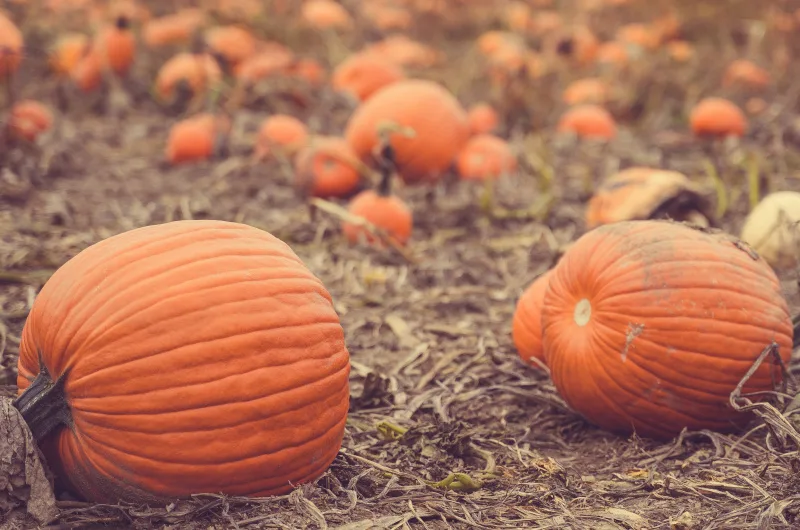How To Grow Pumpkins
Few things evoke the spirit of autumn quite like the vibrant and hearty pumpkin. Whether you’re aiming to create your own Halloween decorations or looking to savour the flavours of the season, growing pumpkins can be a rewarding and fulfilling endeavor. With the right techniques and a bit of dedication, you can nurture these remarkable gourds from tiny seeds to impressive fruits. In this guide, we’ll walk you through the step-by-step process of how to grow pumpkins, covering everything from planting to troubleshooting common problems.
Getting Started: Choosing the Right Variety
Before you embark on your pumpkin-growing journey, it’s essential to choose the right pumpkin variety for your needs. Pumpkins come in a wide array of shapes, sizes, and colors. Whether you’re looking for those bright orange fruits for Halloween or aiming to try out a unique variety, make sure to select seeds that align with your preferences and growing conditions. Some popular pumpkin varieties include Jack O’Lantern, Sugar Pie, Connecticut Field, and Cinderella.
Sowing Pumpkin Seeds
Growing pumpkins typically starts with sowing pumpkin seeds. To give your pumpkin plants a head start, it’s a good idea to start the seeds indoors about two to four weeks before the last expected frost. Fill seed trays or pots with a well-draining seed-starting mix and plant the seeds about an inch deep. Keep the soil consistently moist and warm (around 70-85°F or 21-29°C) to encourage germination.
Transplanting Seedlings
Once the danger of frost has passed and your pumpkin seedlings have grown a couple of true leaves, it’s time to transplant them into your garden. Choose a sunny location with fertile soil that receives at least six hours of direct sunlight per day. Pumpkin plants require plenty of space to spread out their sprawling vines, so ensure that you provide enough room between plants. A spacing of about 4-6 feet apart in rows that are 8-12 feet apart is ideal.
Preparing the Soil
Pumpkins thrive in well-draining, fertile soil. Before transplanting your seedlings, amend the soil with compost or well-rotted manure to improve its texture and nutrient content. This will provide a solid foundation for your pumpkin plants to establish strong roots and develop robust vines.
Caring for Pumpkin Plants
As your pumpkin plants grow, they’ll require regular care to ensure healthy development and a bountiful harvest. Here are some key aspects to keep in mind:
1. Watering: Pumpkins need plenty of water, especially during their initial growth stages and when they start producing flowers and fruits. Provide about 1 inch of water per week, either through rainfall or irrigation. Water at the base of the plants to prevent wetting the leaves, as damp foliage can lead to fungal diseases.
2. Fertilisation: To promote healthy growth, feed your pumpkin plants with a balanced fertiliser once they’ve established their first true leaves. Follow the recommendations on the fertiliser packaging for application rates and timing.
3. Mulching: Applying a layer of organic mulch around the base of your pumpkin plants helps retain soil moisture, suppress weed growth, and maintain even soil temperatures.
4. Support and Protection: Pumpkin vines can become quite heavy once the fruits start developing. Providing support, such as gently lifting the vines onto trellises or wooden planks, can help prevent them from breaking. Using row covers can also protect young plants from pests and provide some insulation during cooler nights.
Pollination and Fruit Set
Pumpkin plants produce separate male and female flowers. The male flowers typically appear first and are important for pollination. Bees and other pollinators play a crucial role in transferring pollen from male flowers to female flowers, resulting in fruit development. To encourage proper pollination, avoid using pesticides that might harm pollinators and consider planting pollinator-friendly flowers nearby.
Harvesting Pumpkins
The anticipation of harvesting your homegrown pumpkins is exciting, but it’s essential to time your harvest correctly. Pumpkins are ready to be picked when they have reached their full color, whether that’s the classic bright orange or the specific color of the variety you’re growing. The stem should also be tough and hard, indicating that the pumpkin is mature. Use a sharp knife or pruners to cut the stem, leaving a few inches attached to the fruit.
Problem-Solving and Pest Management
Despite your best efforts, pumpkin plants can still face challenges. One common issue is powdery mildew, a fungal disease that appears as white powdery spots on the leaves. To prevent powdery mildew, ensure proper air circulation around the plants and water at the base to avoid wetting the leaves. If the disease does strike, there are organic fungicides you can use.
Other pests like squash bugs and cucumber beetles can also pose a threat to your pumpkin plants. Regularly inspect your plants for signs of pest infestations and remove any affected leaves or insects. Introducing natural predators like ladybirds can also help keep pest populations in check.
Conclusion
Growing pumpkins is not only a delightful way to welcome autumn but also a rewarding endeavor that can yield impressive results with the right techniques. By following these expert tips on how to grow pumpkins, you can nurture healthy plants, troubleshoot common issues, and enjoy a bountiful harvest of these iconic orange fruits. From sowing pumpkin seeds to nurturing the vines, the journey of cultivating pumpkins is a true labor of love that connects you with the rhythm of nature and the changing seasons. So, roll up your sleeves, prepare your fertile soil, and embark on the exciting adventure of growing your own pumpkins.



